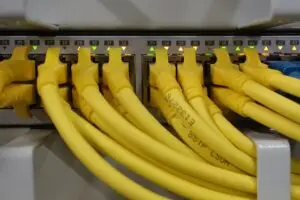
Many organizations turn to managed IT services to handle their IT needs, allowing them to focus on their core business functions. However, understanding the managed IT service pricing can be complex, as various factors influence the cost.
This article will discuss the factors that affect managed IT service pricing, providing valuable insights to help businesses make informed decisions.
Following are the most common factors that determine the Managed IT Service Costs:
The scope of services included in a managed IT services contract significantly impacts the pricing. Managed service providers (MSPs) offer various services, from basic support and maintenance to comprehensive IT management.
The broader the scope of services, the higher the managed IT services cost. Businesses should carefully assess their IT needs to determine the appropriate level of service required.
Another factor affecting managed IT service pricing is the MSP’s support level, which can range from standard business hours to 24/7 support.
Higher support levels typically come with increased costs. Businesses must evaluate their support requirements based on their operational hours and the criticality of IT systems.

The number of users and devices covered under the managed IT services contract directly impacts the managed services pricing. MSPs often charge based on the number of endpoints they need to manage and support.
As the number of users and devices increases, so does the complexity and cost of managing the IT environment. Businesses should provide an accurate count to ensure proper pricing and support.

The complexity of a business’s IT network significantly determines managed IT services cost. Factors such as the network size, the number of locations, and the types of systems in use can influence pricing.
Higher network complexity generally increases costs due to the additional resources and expertise required for effective management.
A business’s level of security requirement can significantly impact managed IT service pricing.
Businesses with higher security needs should expect to pay more for managed IT services that include advanced security solutions and compliance support.
Service Level Agreements (SLAs) define the performance and quality standards that the MSP commits to delivering. The terms and conditions of SLAs can affect managed services pricing.
Businesses should carefully review SLAs to ensure they align with their expectations and requirements, understanding that more stringent SLAs may result in higher costs.
The ability to customize and adapt managed IT services to meet specific business needs can affect managed IT services costs. MSPs that offer tailored solutions and flexible contracts may charge more for these personalized services.
Businesses seeking highly customized and flexibly managed IT services should be prepared for higher costs but can benefit from solutions that closely align with their specific needs.
The geographic location of a business can influence managed IT service pricing. Costs can vary based on the local market rates for IT services and the proximity of the MSP.
Understanding the impact of geographic location on pricing helps businesses set realistic expectations and budget accordingly.
Understanding the factors affecting managed IT services pricing is essential for businesses investing in them. Businesses can make informed decisions by considering all the factors mentioned above. This helps them find the right managed IT service solutions for their needs.
Investing in managed IT solutions can provide numerous benefits, including improved productivity, better security, and reduced downtime. By carefully evaluating these factors, businesses can ensure they receive the best value for their investment and achieve their IT goals.
For more information on how managed IT solutions can benefit your business, you can rely on our IT experts at Imagine IT. Connect with us today!
Feel Free to Get in Touch
Related Posts
Thank you for contacting us! We’re excited to talk to you. Someone will get back to you soon!